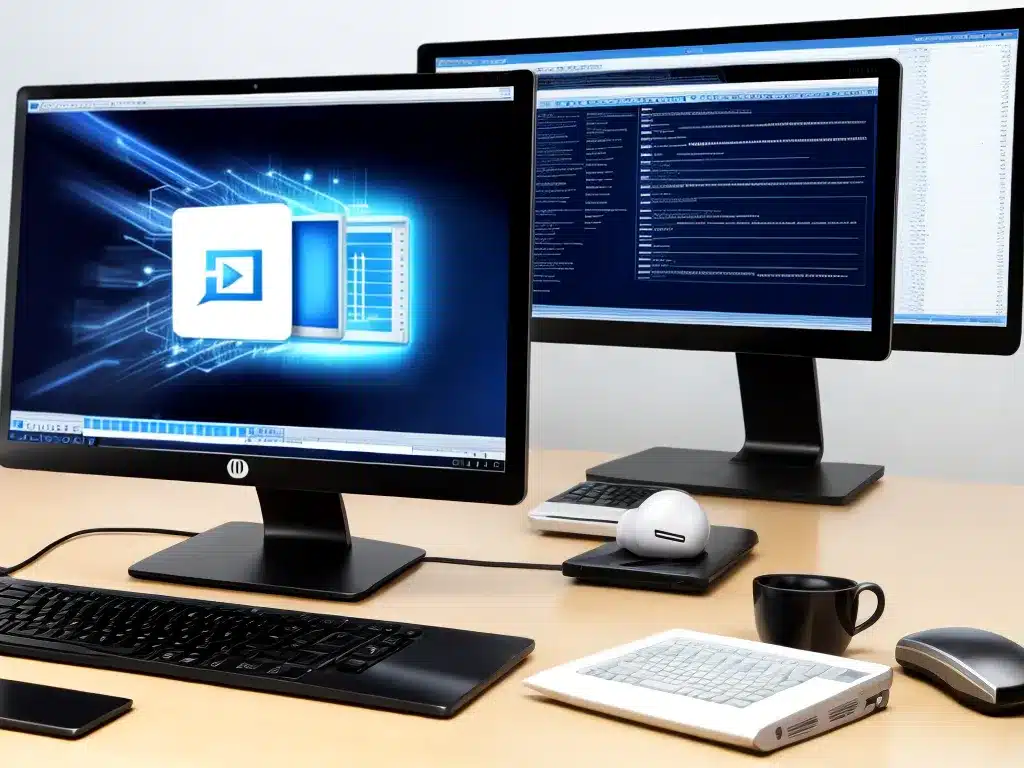
Monitoring your computer’s temperature is important to ensure it runs smoothly and avoid overheating issues. High temperatures can lead to system crashes, component damage, and decreased performance. Thankfully, there are several software options available to easily track your computers temps. In this article, I will share my top 5 recommendations for the best software to monitor your computer’s temperature.
1. Core Temp
Core Temp is a compact and no-nonsense tool to monitor processor temperature and load. Here’s why it’s my top pick:
-
Lightweight and easy to use – Core Temp provides a straightforward interface without unnecessary clutter. It’s also very lightweight on system resources.
-
Multiple CPU support – You can monitor temperature for all CPU cores individually or an average across all cores. Helpful for multi-core systems.
-
Logging and tracking – Core Temp can log temperatures over time so you can track patterns and spikes. The data can also be exported.
-
Automatic fan control – One handy feature is the ability to configure automatic fan control based on defined temperature triggers.
Overall, Core Temp balances simplicity and useful features for those looking for a basic CPU monitoring utility. It’s reliable and well-supported after many years on the market.
2. Open Hardware Monitor
For monitoring system temperatures beyond just the CPU, Open Hardware Monitor is an excellent free choice. Here are its notable features:
-
Comprehensive monitoring – Tracks CPU, GPU, hard drives, motherboard and more. Provides max/min/average for all values.
-
Automatic overclocking – Can overclock your GPU automatically based on temperature triggers for extra performance.
-
Portable operation – No installation required. Can run directly from a USB drive on any Windows PC.
-
Customizable interface – Re-arrange panels and graphs as desired for the data you care about most.
-
Alerting – Set temperature thresholds and alerts when components exceed defined limits.
While not the fanciest looking tool, Open Hardware Monitor packs a ton of depth in monitoring your full system thermal environment.
3. HWMonitor
The appropriately named HWMonitor is one of the most full-featured hardware monitoring tools available free. Standout features include:
-
Broad component monitoring – Covers temperature, fan speeds and voltages for CPU, GPU, hard drives and motherboard.
-
Automatic overclocking – Like Open Hardware Monitor, can automatically overclock your GPU based on thermal headroom.
-
Graphing and logging – Real-time graphing makes it easy to visualize thermal performance over time. Logging allows exporting data.
-
Motherboard sensor support – Includes support for reading thermal sensors built into many modern motherboards.
-
Plugin support – Plugins allow extending functionality including integration with other apps like HWiNFO.
HWMonitor is packed with data and options that appeal to more advanced users. The interface looks dated but don’t let that fool you.
4. MSI Afterburner
Although designed primarily for graphics card overclocking, MSI Afterburner is also one of the best tools for monitoring GPU temperatures. Key features:
-
In-game overlay – See GPU usage, temps and more while gaming without needing to exit or tab away.
-
Temperature dependent profiles – Automatically adjust GPU clock speeds at defined temperature thresholds.
-
Robust graphing – Graph temps, fan speeds and clock speeds simultaneously for clear visualization.
-
Mobile monitoring – View temperatures and adjust profiles using the Android/iOS app.
-
Plugin support – Add plugins for additional functionality like the RTSS plugin for frame rate monitoring.
While its main purpose is GPU overclocking, Afterburner’s temperature monitoring and graphing are definitely up to par. The in-game overlay is a nice bonus.
5. AIDA64
For the ultimate in system information and diagnostics, AIDA64 provides unparalleled depth. Important features for temperature monitoring include:
-
Every sensor imaginable – CPU, GPU, HDD, SSD, motherboard – if your system can measure it, AIDA64 will report it.
-
Component diagnosis – Comprehensive tools like disk health monitoring aid troubleshooting temperature issues.
-
System stability testing – Stress test your CPU, memory and disks to assess cooling effectiveness under heavy loads.
-
Overclocking utilities – Test performance gains from overclocking while monitoring thermal impact.
-
Custom alerts – Fine tune alert thresholds for components based on your specific tolerance.
AIDA64 isn’t free, but the 30 day trial is fully featured. While overkill for basic monitoring, it’s incredibly powerful for diagnosing complex thermal performance issues.
Summary
Monitoring your computer’s temperatures enables identifying thermal problems early and gauging the effectiveness of cooling solutions. Hopefully this overview gives you a few options to consider for different monitoring needs. Just remember, cooler computers are happier computers!












